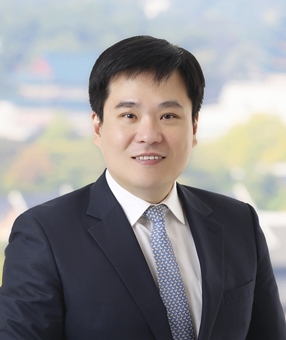On January 2, 2025, the Korean government announced a set of initiatives with the goal of ensuring stable economic management, including enhanced incentives for foreign investment, support for addressing supply chain risks, and measures to encourage corporate investment.
The key details of the above initiatives are as follows.
|
1. |
Financial/Tax/Monetary Support Package to Encourage Foreign Investment |
-
In terms of financial support for foreign investment, the government plans to increase the limits on cash grants for foreign investment as well as the government contribution ratio, expend much of the KRW 200 billion in cash grants which have been allocated for 2025 in the first half of the year, and expand the budget for financial support.
|
– |
The government plans to increase the cash support limits on foreign investment by 5% to 20% depending on the sector and temporarily raise the cash support limits in 2025 by up to 25%, such that in certain cases the cash support limits can be up to 75%. |
Maximum Cash Grants for Foreign Investment by Sector
|
Before Amendment |
After Amendment (Temporary Measures for 2025) |
||
|
R&D centers, national high-tech strategic technologies[1] |
50% |
R&D centers (national high-tech strategic technologies), regional HQ of global enterprises |
50% (75%) |
|
R&D centers (others), national high-tech strategic technologies |
50 (60%) |
||
|
New growth engine (“NGE”) industrial technologies, high-tech, material/components/equipment |
40% |
NGE industrial technologies, high-tech, material/components/equipment |
45 (55%) |
|
Regional HQ of global enterprises, large scale job creation, regional specialized industries, etc. |
30% |
Large scale job creation, regional specialized industries, etc. |
40 (50%) |
|
– |
The government has increased the government contribution ratio for cash grants by 10% for foreign investment in non-metropolitan areas and Opportunity Development Special Zones, respectively.* |
National/Local Government Contribution Ratio for Cash Grants for Foreign Investment
|
Before Amendment (National : Local Government) |
After Amendment (National : Local Government) |
||
|
Metropolitan area |
30 : 70 |
Metropolitan area |
30 : 70 |
|
Non-metropolitan area |
60 : 40 |
Non-metropolitan area |
70 : 30 |
|
Opportunity Development Zones |
70 : 30 |
Opportunity Development Zones |
80 : 20 |
* The government contribution ratio may be increased for R&D of high-tech (by 10%) and national strategic technologies/high-tech strategic technologies (by 20%) within the overall limit of 80%.
-
The government plans to extend the existing exemption period for Tariffs/Individual Consumption Tax/Value-Added Taxes on imported capital goods of up to six years (100% exemption for five years; which may be extended for up to another year) to up to seven years (100% exemption for five years; which may be extended for up to another two years).
-
Businesses investing in Opportunity Development Special Zones[2] are entitled to various forms of support including tax benefits and financial support, improved living standards, etc. For foreign-invested enterprises, they will be subject to separate rules, including an exemption from the maximum area limit imposed on Opportunity Development Special Zones (4.95km2 for metropolitan cities and 6.6km2 for provinces).
|
Tax benefits: start-up businesses (including establishment of new facilities) in Opportunity Development Special Zones will be eligible for an exemption of corporate income tax (100% exemption for the first five years, and a 50% reduction for the following two years), a 75% reduction in acquisition tax for the establishment of new or expansion of existing factories, and a 75% reduction in property tax for five years, etc. Financial support: a 5%p increase in the rate of local investment promotion subsidy, and 100% exemption from the obligation to contribute development charges.[3] Improved living standards: prioritized supply of private housing for workers employed by eligible enterprises, extra points awarded in the selection process to obtain support for the establishment of common workplace daycare centers. |
-
The government plans to introduce a preferential loan support program for foreign-invested enterprises, offering reduced interest rates and higher loan limits (equivalent to those offered to domestic companies who re-shore their operations back to in Korea). There are also plans for the establishment of foreign investment promotion funds (including a plan to establish master funds with contributions from policy financial institutions such as the Export-Import Bank of Korea, and subsidiary funds with matching private sector funding) in order to reduce the financial burden for foreign-invested enterprises seeking to make investments into new facilities and expansion of existing facilities.
|
2. |
Enhanced Support for Addressing Supply Chain Risks |
-
In order to stabilize supply chains through expanded support for domestic production, the government plans to (i) increase the limit on cash support for foreign investment by up to 10% in the case of investment into new or the expansion of existing facilities for economic security items and economic security services, and also increase the limit on local investment promotion subsidies by up to 2%, and (ii) introduce a new supply chain support program which encourages domestic production, diversification of import sources and stockpiling to stabilize the supply of economic security items that are at a higher risk of supply chain crises.
-
In addition, the government plans to provide funding packages through a “Core Minerals Investment Council” which will be a public-private joint initiative and promote co-investment by the public and private sector by accessing a KRW 50 billion supply chain stabilization fund.
|
3. |
Enhanced Incentives to Foster a More Favorable Investment Climate for Businesses |
-
Enhanced tax benefits
|
– |
The government plans to make permanent the integrated investment tax credit rate which had been temporarily increased and include small and medium enterprises and middle market enterprises to be eligible for temporary investment tax credits for a temporary basis in 2025.[4] |
|
– |
The government plans to apply special exemptions allowing accelerated depreciation for facility investment on a temporary basis in 2025 in order to reduce the burden for small and medium enterprises. |
|
– |
The government plans to include artificial intelligence (“AI”) and future transportation methods (e.g., eco-friendly vessels, autonomous navigation system, etc.) as a sector of national strategic technology. |
|
– |
The government plans to increase the rate of tax credits applied to advanced R&D facility investment (equivalent to those applied to investment into facilities for national strategic technologies and facilities for the commercialization of NGE industrial technologies). |
|
– |
The government plans to add and expand tax credits applied to R&D of national strategic technologies (e.g., software rental/purchase costs, rental/usage fees for research/testing facilities). |
-
Enhanced financial support
|
– |
Increased subsidies to promote local investment |
|
(i) |
The government plans to increase the subsidy limit for each investment case from the current KRW 10 billion to KRW 15 billion and increase the total subsidy budget by 6% (i.e., a total budget of KRW 221.8 billion). |
|
(ii) |
Businesses in Opportunity Development Special Zones will be entitled to an increased rate of subsidy for facility investment (+5% for large enterprises, +8% for middle market enterprises, and +10% for small and medium enterprises) and an increased rate of site subsidy (+8% for middle market enterprises and +10% for small and medium enterprises). |
|
(iii) |
Companies that invest in industrial complexes that remain unsold for five years or longer after completion will be entitled to an extra 2% in the rate of subsidy for facility investment. |
|
(iv) |
The government plans to relax the eligibility criteria to apply for subsidies and the obligation to maintain the existing business premises. |
|
– |
To encourage the re-shoring back to Korea of businesses which had moved their operations offshore, the government plans to offer additional support in the form of an extra subsidy in respect of the actual amount of investments made which is in excess of the investment plan submitted as part of the original subsidy application (within a limit of 10% of the initially-approved subsidy amount). |
As described above, the Korean government plans to significantly enhance various support measures in 2025 in order to encourage inbound foreign investment, including Financial/Tax/Monetary support. Accordingly, it would be advisable for foreign investors who are considering investing into Korea to examine whether these benefits and incentives may be available for their businesses.
[1] For further information, please refer to our newsletter on the selection of “National High-Tech Strategic Technologies” of September 27, 2023 (Link).
[2] In 2024, certain sites located in Gyeongsangbuk-do, Jeollanam-do, Jeollabuk-do Special Self-Governing Province, Daegu Metropolitan City, Daejeon Metropolitan City, Gyeongsangnam-do, Busan Metropolitan City, and Jeju Special Self-Governing Province, were designated as the first group of Opportunity Development Special Zones. Subsequently, certain areas in Ulsan Metropolitan City, Sejong Special Self-Governing City, Gwangju Metropolitan City, and Chungcheongnam-do were designated as the second group, and certain areas in Gyeongsangnam-do and Busan Metropolitan City were designated as the third group.
[3] Basically, certain public imposts in the form of charges imposed by the government on development gains made by developers.
[4] The government plans to increase the basic deduction rate for general investment from 10% to 12% for small and medium enterprises and from 5% to 7% for middle market enterprises. In addition, the government plans to increase the deduction rate for investment in facilities for the commercialization of NGE industrial technologies from 12% to 14% for small and medium enterprises and from 6% to 8% for middle market enterprises.







